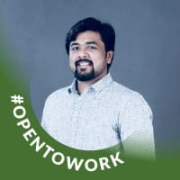

Domo and Talend Data Fabric compete in data analytics and integration, with Domo leading in ease of use and pricing, while Talend excels in integration and data management for complex environments.
Features: Domo is known for powerful visualization tools, real-time analytics, and collaboration capabilities. Talend Data Fabric, on the other hand, offers comprehensive data integration and transformation features, supporting robust data governance and compliance.
Room for Improvement: Domo could enhance its data handling capabilities and offer more advanced analytics features. Talend might improve ease of use for new users and reduce setup complexity. Both could benefit from quicker deployment processes and more streamlined interfaces.
Ease of Deployment and Customer Service: Domo provides a cloud-based deployment, simplifying implementation with support from a dedicated service team. Talend Data Fabric offers flexible deployment options, including on-premise, with extensive documentation and support services catering to complex requirements.
Pricing and ROI: Domo offers competitive pricing with quicker ROI due to ease of implementation and scalability. Talend Data Fabric may have higher setup costs but promises substantial ROI for large-scale data operations through its powerful integration and management features.
| Product | Market Share (%) |
|---|---|
| Domo | 0.6% |
| Talend Data Fabric | 0.8% |
| Other | 98.6% |


| Company Size | Count |
|---|---|
| Small Business | 16 |
| Midsize Enterprise | 12 |
| Large Enterprise | 20 |
| Company Size | Count |
|---|---|
| Small Business | 4 |
| Large Enterprise | 3 |
Domo is a cloud-based, mobile-first BI platform that helps companies drive more value from their data by helping organizations better integrate, interpret and use data to drive timely decision making and action across the business. The Domo platform enhances existing data warehouse and BI tools and allows users to build custom apps, automate data pipelines, and make data science accessible for anyone through automated insights that can be shared with internal or external stakeholders.
Find more information on The Business Cloud Here.
Talend, a leader in cloud data integration and data integrity, enables companies to transform by delivering trusted data at the speed of business.
Talend Data Fabric offers a single suite of apps that shorten the time to trusted data. Users can collect data across systems; govern it to ensure proper use, transform it into new formats and improve quality, and share it with internal and external stakeholders.
Over 3,000 global enterprise customers have chosen Talend to help them turn all their raw data into trusted data to make business decisions with confidence — including GE, HP Inc., and Domino’s.
We monitor all Data Integration reviews to prevent fraudulent reviews and keep review quality high. We do not post reviews by company employees or direct competitors. We validate each review for authenticity via cross-reference with LinkedIn, and personal follow-up with the reviewer when necessary.